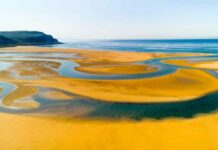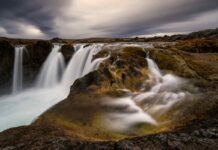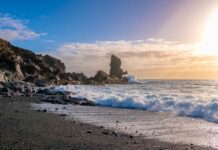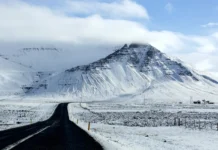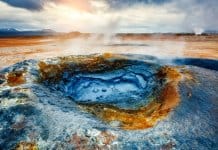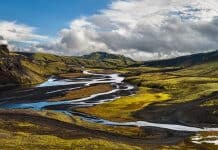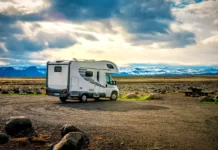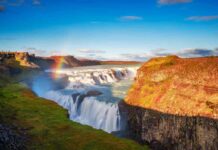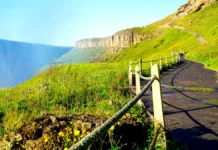Winter is here, and that means an onslaught of winter tourists making their way around Iceland’s Ring Road. You can’t really blame them. Prices are lower (along with temperatures), the magnificent Northern Lights are on full display, and you can take part in adventure activities like glacier cave and ice cave exploration and glacier hikes. When driving in Iceland, especially in winter, there are quite a few things to be aware of. From the types of roads you can drive on to weather conditions, navigating your way around the country via car, campervan or motorhome is unlike what you will experience back home. I want you to arrive safely at your destination, so let’s go over some basics of driving in Iceland in the winter. You can use these tips at any time of year, but they are especially relevant from October to April.
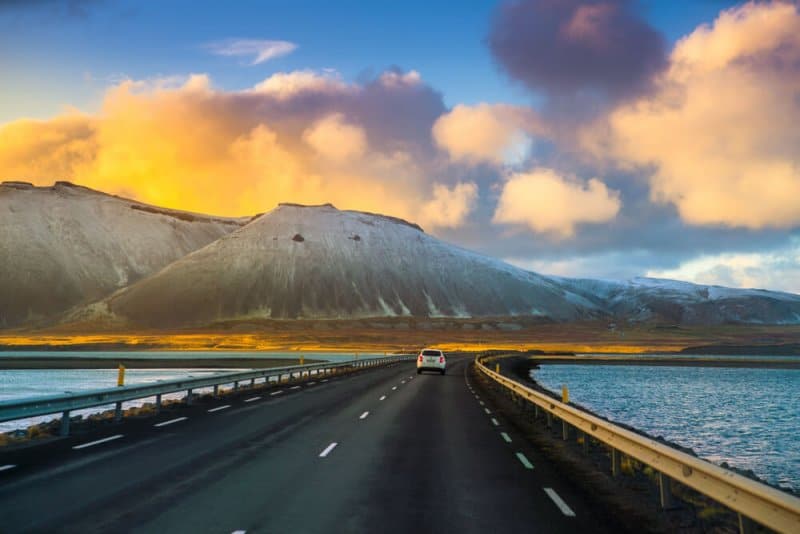
Iceland is Different. So Are Driving Conditions Here
If you’re from somewhere that experiences harsh winters, you probably think you’ve seen it all. You’ve skidded on black ice (which can be quite scary), you’ve slushed through the wet snow on the road. You know to put snow tires on your vehicle. You may have even driven in a snowstorm. Don’t let this fool you into thinking that you are fully prepared for driving in Iceland. The country is filled with surprises, so be ready for the unexpected. Come in with the mindset that you need to pay attention, ask for advice, and be cautious.
F-Roads and Secondary Roads in the Winter
In addition to the cold weather elements we’ve mentioned above, you also need to keep in mind that many roads in Iceland are unpaved. This adds a further complication when traveling. As a good rule of thumb, two-digit roads are secondary roads and are often partially unpaved. For example, Road 85, which is part of the Diamond Circle route and goes from Húsavík to Mývatn, is a secondary road. If you are traveling to farms or smaller villages, you’ll likely end up on a three-digit road. These are unpaved secondary roads.
Just a quick notes about F-Roads. These are mountain roads (“fjall” means mountain in Icelandic) and are only open in the summer. Melting and half-frozen ice during fall, winter, and spring make for perilous driving conditions. Icelanders prefer to play it safe, both for themselves and visitors and block access to these roads during the more dangerous times of the year.

Check the Weather Forecast
The Iceland Meteorological Office website and the Road and Coastal Administration website [add link] will be your best friends while driving in Iceland. You should check these sites at least once a day, if not multiple times a day. Iceland’s weather is unpredictable, and because it can change so quickly, you’ll want to stay informed with the latest changes. Always consult the weather forecast to make sure no storms are heading your way because trust me, the last thing you want is the nightmare of being stranded in your automobile in the middle of a snowstorm or having your car frozen to the road. Yes, this happens. Google the pictures if you don’t believe it.
The same advice goes with checking the wind forecast. Believe it or not, Iceland experiences hurricane-force gales. If you don’t prepare for high winds (by avoiding them altogether), you just might find yourself fighting with your car’s steering wheel and struggling to stay on the road. This is especially true for small vehicles.
Slow Down Speed Racer
I know this sounds like fundamental driving advice, but it’s especially important in Iceland. Follow the speed limit! It’s not a race to arrive at your destination. And quite frankly, there’s so much to enjoy in your surroundings. Depending on where you’re driving, the speed limit can range from 80 – 90 km/h (50 – 56 mph). This is usually for paved rural roads and rural gravel roads. Now, this doesn’t mean you need to go that fast! If it’s a clear day with good driving conditions, even with snow and ice on the ground, you should be fine.
Practice caution of course, and always pay attention to the task at hand. If you see something truly awe-inspiring like stunning landscapes or unusual basalt cliff faces or gorgeous waterfalls, please pull over to enjoy them and take a picture. Give yourself plenty of time to arrive at your destination so that you won’t feel rushed in the car. And if you find yourself driving in fog, sleet, or other inclement conditions, please slow down! Driving distances in Iceland are relatively short, so there’s absolutely no reason to rush to your destination.
Also, you need to keep your lights on at all times while driving in Iceland, regardless of visibility.

Winter Driving in Iceland – Tips and Advice
As you can see, there are a few extra steps and precautions that you need to take when driving in Iceland in winter. You want to have a safe, fun-filled adventure, so don’t let the bad weather or unruly storms ruin your travel plans. Have an amazing time and let us know how your trip goes!

